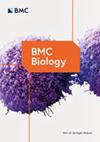FgCWM1 通过调节 TaNDUFA9 来抑制 SA 的合成并降低小麦对 FHB 的抗性
IF 4.4
1区 生物学
Q1 BIOLOGY
引用次数: 0
摘要
镰孢菌纹枯病(FHB)严重影响小麦的产量和品质。了解禾本科镰刀菌(FHB 的主要病原体)与小麦之间错综复杂的相互作用机制,对于制定有效的防治策略至关重要。我们之前的研究表明,位于细胞壁最外层的细胞壁甘露蛋白 FgCWM1 的缺失会降低禾谷镰孢的致病性,并诱导水杨酸(SA)在小麦中的积累。因此,我们认为 FgCWM1 可能在禾谷镰孢和小麦之间的相互作用中发挥作用,因为它的物理位置有利于产生相互作用效应。在本研究中,我们通过酵母双杂交试验发现 NADH 脱氢酶 [泛醌] 1 α 亚复合体亚基 9(NDUFA9)的 C 端区域可与 FgCWM1 相互作用。通过 Co-IP 和 BiFC 分析进一步证实了这种相互作用。亚细胞定位的结果一致表明,TaNDUFA9 定位于细胞质中细胞膜和叶绿体附近。还检测到该蛋白与线粒体相关,并对复合体 I 的活性有正向调节作用。TaNDUFA9 功能缺失突变体表现出开花延迟、结实率降低和花粉育性降低。但是,它的 SA 水平升高,对禾谷镰孢引起的 FHB 的抗性增强。同时,接种 FgCWM1 基因缺失突变株会增加小麦体内 SA 的合成。这些发现表明,TaNDUFA9 会抑制小麦的 SA 合成和 FHB 抗性。FgCWM1 通过与 TaNDUFA9 的 C 端区域相互作用,增强了这种抑制作用,最终促进了 F. graminearum 在小麦中的感染。这项研究为了解禾谷粉镰孢与小麦之间的相互作用机制提供了新的视角。TaNDUFA9可作为增强小麦抗FHB能力的靶基因。本文章由计算机程序翻译,如有差异,请以英文原文为准。
FgCWM1 modulates TaNDUFA9 to inhibit SA synthesis and reduce FHB resistance in wheat
Fusarium head blight (FHB) significantly impacts wheat yield and quality. Understanding the intricate interaction mechanisms between Fusarium graminearum (the main pathogen of FHB) and wheat is crucial for developing effective strategies to manage and this disease. Our previous studies had shown that the absence of the cell wall mannoprotein FgCWM1, located at the outermost layer of the cell wall, led to a decrease in the pathogenicity of F. graminearum and induced the accumulation of salicylic acid (SA) in wheat. Hence, we propose that FgCWM1 may play a role in interacting between F. graminearum and wheat, as its physical location facilitates interaction effects. In this study, we have identified that the C-terminal region of NADH dehydrogenase [ubiquinone] 1 alpha subcomplex subunit 9 (NDUFA9) could interact with FgCWM1 through the yeast two-hybrid assay. The interaction was further confirmed through the combination of Co-IP and BiFC analyses. Consistently, the results of subcellular localization indicated that TaNDUFA9 was localized in the cytoplasm adjacent to the cell membrane and chloroplasts. The protein was also detected to be associated with mitochondria and positively regulated complex I activity. The loss-of-function mutant of TaNDUFA9 exhibited a delay in flowering, decreased seed setting rate, and reduced pollen fertility. However, it exhibited elevated levels of SA and increased resistance to FHB caused by F. graminearum infection. Meanwhile, inoculation with the FgCWM1 deletion mutant strain led to increased synthesis of SA in wheat. These findings suggest that TaNDUFA9 inhibits SA synthesis and FHB resistance in wheat. FgCWM1 enhances this inhibition by interacting with the C-terminal region of TaNDUFA9, ultimately facilitating F. graminearum infection in wheat. This study provides new insights into the interaction mechanism between F. graminearum and wheat. TaNDUFA9 could serve as a target gene for enhancing wheat resistance to FHB.
求助全文
通过发布文献求助,成功后即可免费获取论文全文。
去求助
来源期刊

BMC Biology
生物-生物学
CiteScore
7.80
自引率
1.90%
发文量
260
审稿时长
3 months
期刊介绍:
BMC Biology is a broad scope journal covering all areas of biology. Our content includes research articles, new methods and tools. BMC Biology also publishes reviews, Q&A, and commentaries.
 求助内容:
求助内容: 应助结果提醒方式:
应助结果提醒方式:


